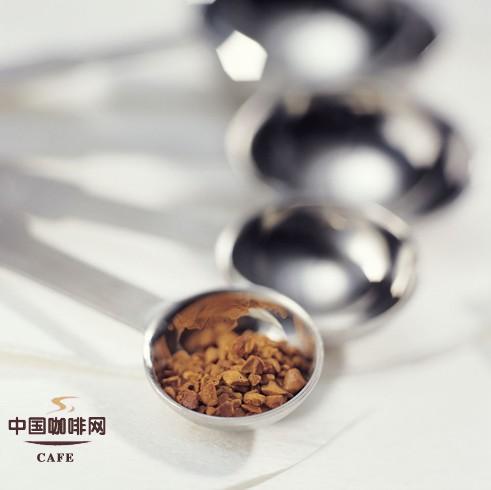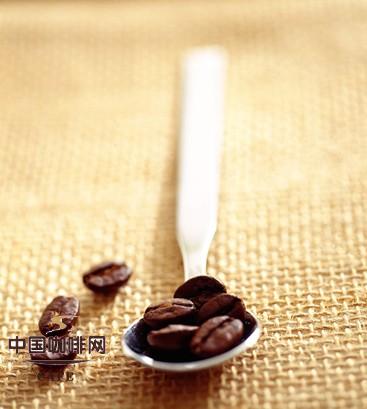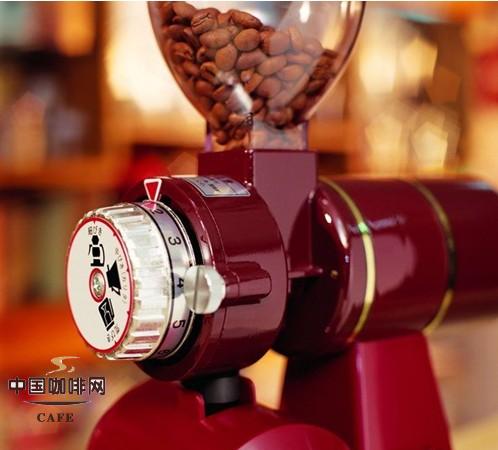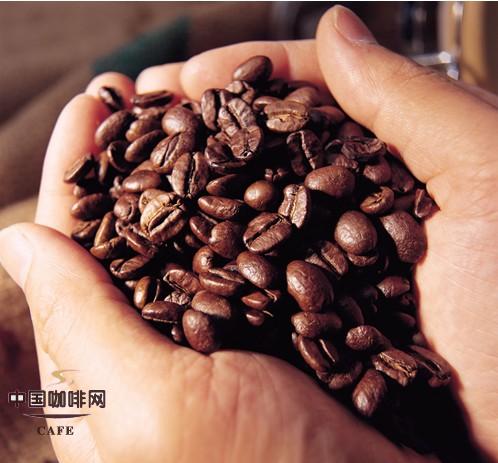The secret to making coffee granules

The Italian coffee machine uses pressure to quickly pass the steam through the coffee particles and extract the best ingredients from the coffee, so the time for the steam to stay in the coffee particles directly affects the quality of the coffee.
Procedure:
Step 1 scoop the coffee particles into the coffee filter cover, observe that the coffee exceeds the level of the lid, and cut off the excess coffee particles with a flat knife or spoon.
Step 2 knock the coffee filter cover so that the coffee particles are evenly distributed, which is why the better Italian coffee machines use heavier metal to make the coffee filter cover. Because if it is other materials, it may not be able to withstand too many heavy knocks.
Step 3 use a pressure bar to filter the coffee particles in the lid. In the pressure of coffee particles, it is best to maintain the level of coffee particles, otherwise the steam will be uneven, it is best to use the muscles under the thumb to press, it is easier to apply force evenly. And how much pressure does it take, you can try it several times. The important thing is to try the same batch of coffee particles several times before you can master the relationship between your pressing method and the function of the machine.
Step 4 knock down the curry powder on the edge of the surface of the coffee particles just pressed (horizontal drum), repeat it again, and turn 90 degrees with your wrist when pressing down. Then, clean up the coffee particles around the filter cover.
Step 5, lock the filter cover, put the water in according to the instructions of the machine, press the switch, and the steam begins to pass through the coffee powder.
Brilliant secrets:
Some household Italian coffee machines have the function of wetting coffee particles, that is, after pressing the switch for 5 seconds and 2 seconds, the coffee tree is moistened with a little moisture before it is extracted with a large amount of steam. You can tell from the panel light of the coffee machine what it is doing. If the coffee machine you bought does not provide this function, you can also use your own operation switch. Practice: after pressing the start button for 10 seconds, temporarily shut down the computer. Wait about 3 seconds. And turn it back on.

The same goal can be achieved in this way:
1. After putting the coffee particles into the filter cover, if the coffee particles are relatively fine, the pressure should not be too heavy, otherwise the water is not easy to pass through, which will cause excessive extraction. On the contrary. If the coffee granules are thicker, press them more closely. Otherwise, the water will flow too fast and the coffee will have a raw and astringent taste.
two。 One more step of warming up the coffee before brewing will make the coffee more mellow.
3. The coffee should be kept warm on the coffee machine for no more than 20 minutes so as not to lose its original flavor.
Follicle coffee seems to be the most unknowledgeable coffee. Some people nicknamed it lazy coffee (probably because there are the least utensils to clean after making a cup of coffee). Because it doesn't have to go through a sophisticated machine (such as an Italian coffee maker), nor does it seem to use any special equipment (such as a siphon pot or a mocha pot). But if you use these seemingly such ideas to make a cup of follicular coffee. You are so wrong, and you'd better not expect too much of that cup of coffee.
Step 1: fold filter paper-take a piece of filter paper to spread out, first check whether the filter paper is broken or soiled, if there is moisture, it is best not to use it, so as not to waste the raw materials of a cup of coffee. First press the side of the filter paper forward or backward about the width of the joint edge. Then the month then folds the funnel of the filter paper in the opposite direction (backward or forward). Finally, spread the filter paper into a funnel by hand, put it in the filter and stick it close to the filter.
Step 2: calculate on the basis of 1215g coffee particles per cup of coffee. Put the right amount of coffee particles in the filter paper. For the fineness of coffee particle grinding, please refer to the coffee grinding section. Pick up the filter. Tap the filter on the edge of the palm to make the coffee particles denser because of vibration. Carefully place the coffee particles together with the filter on the filter pot.
Step 3: prepare water: as with other coffee making methods, it is best to use normal filtered water, calculate the amount of water at about 180ml per cup, and boil the water on the stove until 100oc boil.
Step 4: in the process of waiting for the water to boil. You can pour a small amount of hot water into the coffee pot, shake the filter pot, and then pour out the water to warm it. After warming the pot, we put the coffee particles and filters we have just shot on the filter pot, and all the pre-preparation work is completed.
Step 5: cool down for the first time: fold the pre-prepared towel into a square, wet it with cold water, put it on the kettle that has been boiled and take it away from the stove, cool it for 20 seconds and 30 seconds, and lower the water temperature to about 92 ℃ (the time can be controlled by a small clock. You can also use a cooking thermometer to measure the temperature.
Steaming: wet the coffee particles with cooled water and a very fine flow. The current starts at the center of the filter and spirals outward. The thinner the better, but the thickness should be stable and uninterruptible. The best amount of water is just wet and drenched all the coffee particles. At this point, the coffee particles will absorb and expand forever. In professional terms, this process is called steaming.
Step 6: keep warm. Put the filter pot on the stove to protect the plate. In addition, the coffee should be kept warm in the filter pot so as not to affect the taste of the coffee after cooling. The second cooling, after steaming, put the kettle on the wet towel to cool down, about 20 to 30 seconds, so that the water temperature dropped to about 85 ℃.
Step 7: brew: start injecting water from the center of the filter. Rotate outward from the center in the same direction, the flow can be a little thicker than when steaming, and it should be uniform and uninterruptible. The amount of water is one cup, about 150-180 milliliters.
After rotating the amount of water injected into the cup, the water level reaches the edge of the filter, and finally the water is injected in the middle. Complete the perfect brewing. The finished coffee is about a little more than the cup (brewing plus the amount of water collected). This is to leave some of the finished work for the brewer to try. When it is finished. The coffee particles left behind will form a beautiful semi-oval surface on the filter paper.

Tip-1: it is best to choose the water that boils for the first time, rather than boil it again with cold boiled water and do not use the boiling water that has been kept warm for some time in the electric thermos.
Tip-2: some readers may wonder why it is so difficult to boil the water. The purpose of cooling with a towel is to prevent coffee oranges from touching directly with boiling water and being scalded by boiling water, affecting the aroma and taste of coffee.
Tip-3: if most people are inexperienced, it is difficult to see whether coffee particles are completely wet, especially the expansion rate of coffee particles is very fast, and they should pay attention to the stability of the flow of water. Often there will be too much water or uneven situation. At this point, you can observe that the amount of water is most appropriate when coffee starts dripping into the pot through the filter, but no more than five drops. If the surface of the coffee is also wet, you can be sure that the steaming process has been completed.
Secret-4: how to control the stability of water output? Suggestion: it is best to take a standing posture when brewing. Because of the general height of tables and chairs, after putting on the filter pot and filter. If you brew in a sitting position, you may need to raise your hand too high. It can exert force with its wrists, so it is very accurate to inject water, and when it comes down to two or three cups, the hands may be unbearably sore. So it's best to use standing posture. The upper body naturally leans forward slightly, holding the kettle with the right hand, clamping the right upper arm on the side of the body, and gently holding the edge of the kettle with the left hand to support the weight of the kettle. If the kettle is really too heavy, the right hand cannot fully control it. Hold the right elbow with your left hand to support it. When brewing, it is not with the arm movement, but the upper half of the body is swaying back and forth to do the action around brewing, so that the action is the most smooth and effortless.
Tip-5: for follicular coffee, the most important thing is uniform and stable water flow control, because it is related to whether the coffee particles can roll evenly in the filter. If the coffee particles roll unevenly. It is easy to produce miscellaneous smell, and it can not be extracted completely. This is also why follicular coffee looks easy, but it is not easy to have a perfect cup of finished coffee.
Make coffee in a coffee pot from a French movie
Mocha pots are becoming more and more common. Everyone feels good about this novel and good-looking coffee pot, and some people don't know how to use it at all, but buy it back as a pure decoration in the living room or wine cabinet because of its unique shape.
Step 1: prepare the filtered hot water, it is best to use the clean water filtered by the general household water filter to calculate the amount of water required by 30 mg per cup.
Step 2: usually do not want the brewed coffee to have coffee grounds left at the bottom of the cup. This is also a kind of coffee etiquette. In order to avoid the emergence of coffee grounds, we can prepare a piece of filter paper or filter cloth, according to the coffee container, draw the size of the container on the paper or cloth.
Step 3: cut out the circle just drawn, if it is a filter cloth. It is best to rinse slightly with water to avoid leaving bad cloth pulp in the coffee.
Step 4: pour the water into the kettle, pay attention to that the water cannot exceed the horizontal height of the outlet, otherwise the hot water will spray out with steam after heating, causing unnecessary danger.
Step 5: flatten the surface of the coffee particles with your hands, and then press down gently and horizontally with the decompression plate.
Step 6: lock the filter cover, put the water in according to the instructions of the machine, press the switch, and the steam begins to pass through the coffee particles.
Step 7: remove coffee particles from the edge of the coffee container, otherwise it will affect the service life of the white rubber gasket. The white gasket does not need to be separated from the upper pot in order to avoid accidental loss in cleaning.
Step 8: put the filter cloth on the pressed coffee container.
Step 9: put the coffee container containing coffee particles into the lower pot, then lock the upper pot, pay attention to the thread between the upper and lower pot, lock carefully. Put it on the heater and start heating.
Step 10: in the process of heating, you will hear a rapid hiss, which is the sound of steam rushing to the pot with coffee, once the sound changes to a rustling sound. It may mean that all the moisture in the pot has been turned into coffee. You can listen by experience, or you can open the lid directly (it doesn't matter, it won't affect the quality of the coffee). If you see that the steam hole has stopped steaming, it means that the extraction process has been completed. You're ready to enjoy this cup of hand-refined Italian coffee.

Secret-1: the amount of coffee particles can vary according to your preferences. Because the capacity of each mocha pot and the coffee container are too small, you need to try it several times. In order to find out the amount of coffee particles that suit your taste. If you like it thicker, you can fill the flattened space with a pressure reducing plate when filling the powder, and then gently press it again.
Secret-2: the size of filter cloth. Cannot be larger than the surface of the coffee particles, otherwise it will cause too much pressure. Steam will spill over.
Tip-3: the main function of the decompression plate is to put a small amount of coffee on the filter cloth when making a small amount of coffee in a larger mocha pot, which can easily control the number of cups and the quantity of coffee particles. It is used as the function of pressing bar here. Because the steam pressure produced by the mocha pot is relatively small, generally speaking, it is not like the Italian coffee maker that requires a special pressure bar.
Siphon coffee turns the living room into a cafe
Step 1: select the appropriate thickness of ground beans. The practice of siphon coffee. It is suggested that the thickness of ground beans is close to that of special grains and fine sand. So just buy a small packet of extra granulated sugar and bring it back. By carefully comparing the feel between ground coffee particles and granulated sugar, you can directly judge.
Step 2: put the filter cloth in the upper seat of the siphon pot. Fix the position of the upper seat and the filter cloth, and make sure that the position of the filter cloth is in the center, if the position is wrong, you can hold the bamboo spoon to adjust.
Step 3: scoop the right amount of coffee particles into the upper seat of the siphon pot. The amount of coffee powder. The standard for each siphon coffee in a cafe is about 18 to 22 grams, with 110 milliliters of water. But in general practice, 15 grams is fine.
Step 4: boil water until 100 ℃ boil.
Step 5: insert the upper seat of the siphon pot into the lower seat.
Step 6: the water in the lower seat will begin to rise along the middle tube of the siphon pot. When half of the water has risen to the seat, stir the coffee granules in the upper seat with a bamboo spoon.
Step 7: coffee and water in the upper seat will form a three-layer phenomenon. The stop layer is foam. The middle layer is foamed coffee particles, and the lower layer is immature water that will become the color of standard coffee. If you overturn the can as soon as you rise, it means you have too much firepower. Turn down the fire right away. Stay at rest for about 30 cents for 50 seconds, a process called stew-and then the upper foam gets bigger and bigger. Until the bubble is as big as a golf ball, or even bigger, the middle layer gradually dissolves and precipitates, while the lower layer disappears completely. At this time. You can mix well with a bamboo spoon. Then turn off the engine, and the liquid in the upper seat is coffee with the same color and no foam.
Step 8: if you are skilled. You can stir the circle in the upper seat with a bamboo spoon to quickly lower the coffee particles to the lower seat of the siphon pot, or cover or wipe the lower seat with a wet cloth, so that the hot air in the lower seat shrinks and the coffee is urgently absorbed. At this point, you should see that the coffee particles in the upper seat are shaped like a mountain or a semicircular sphere. Put aside the upper seat and pour the coffee under the seat into the cup. Then complete the production of a cup of siphon coffee.
Important Notice :
前街咖啡 FrontStreet Coffee has moved to new addredd:
FrontStreet Coffee Address: 315,Donghua East Road,GuangZhou
Tel:020 38364473
- Prev

Cappuccino: an interpretation of perfect Coffee
Cappuccino: the Italian who has always pursued perfection does not stop the pursuit of perfect coffee taste. Cappuccino arises at the historic moment. Cappuccino uses high temperature steam to make milk into delicate, soft, mellow milk foam. Then pour the milk foam evenly on top of the fragrant coffee. In this way, the top layer is milk foam and the bottom layer is coffee, which is a cup of cappuccino.
- Next

The rich aroma of black coffee and the method of making black coffee
Black coffee emphasizes the strong aroma of coffee itself. Aroma is not only the life of coffee quality, but also the best expression of coffee production process and roasting technology. The climate of the place of production, variety, refined treatment, harvest, storage, and the appropriateness of baking technology in the consuming country are all conditions that determine the aroma of coffee beans. Bitter is the basic taste of black coffee, there is a difference in strength and texture, raw beans contain only a very small amount.
Related
- Why are the coffee in some coffee shops not enough after being frozen? What should I make up for my American latte cappuccino coffee after being frozen?
- How much water does it take to steam coffee by hand? Why is the coffee brewing and steaming time 30 seconds? What is the purpose of steaming coffee?
- The suspected drink contains too much caffeine! Overlord Tea Lady responds urgently!
- Starbucks rejects antique paper coupons?! Netizen: Missed marketing opportunities!
- What ratio of water temperature and ground does the smart cup method use to press coffee? The difference between brewed coffee and filtered coffee?
- What is the standard process for the purpose of coffee cup testing? What is the difference between hand-brewed coffee and cup testing?
- How to use hand-brewed coffee paragon small golden balls? How does cold coffee lock in the aroma of coffee?
- Is American coffee black? What is the difference between American coffee and drip coffee?
- Unexpected! Well-known tea beverage brand Lele Tea will withdraw from the Zhengzhou market!
- Starbucks enters the fashion and beauty industry?! Netizen: Give me an ice American eye cream

